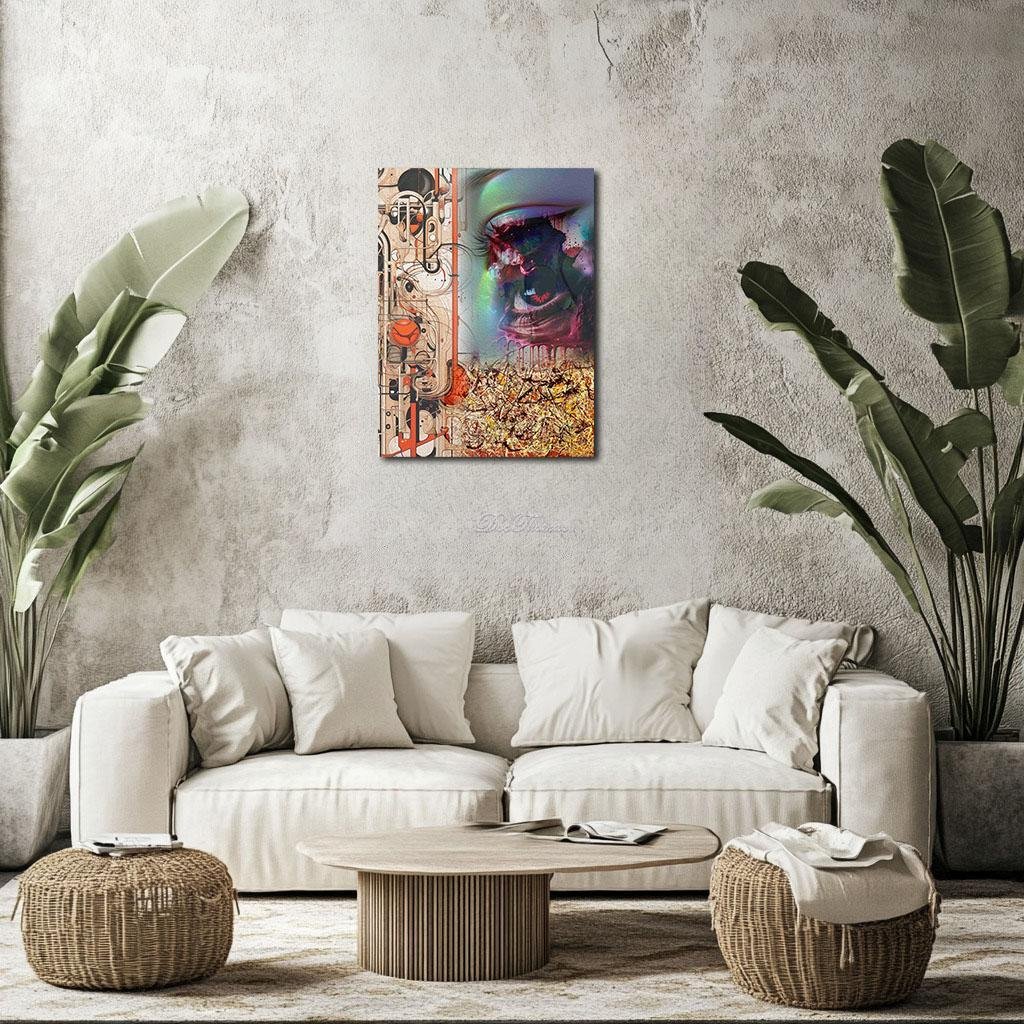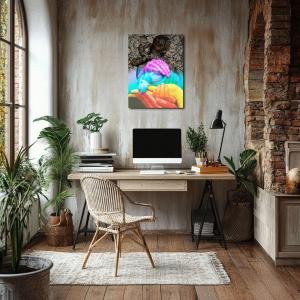Veins of Porcelain: The Retinal Machine
Veins of Porcelain: The Retinal Machine transforms Pollock’s Mural on Indian Red Ground into
a surreal portrait of sensory collapse. A swollen, weeping eye floats amid circuits and Pollock’s
gestural chaos, its gaze flooded by abstraction and digital distortion. Crimson veins, molten
yellows, and blackened fractures coil across skin and signal pathways, blurring flesh with
interface. The original mural’s rhythm becomes a psychic overload—paint turned into electric
scar. This reimagining confronts the mechanics of seeing and the fragility of the self beneath
modern perception.
Please see Below for Details…
Hotline Order:
Mon - Fri: 07AM - 06PM
404-872-4663
Veins of Porcelain: The Retinal Machine reimagines Jackson Pollock’s Mural on Indian Red
Ground as a brutal dissection of sensory overload—where circuitry, flesh, and paint fuse into an
operatic scream of perception. This symbolic reconstruction trades the original mural's rhythmic
procession of primal totems for a hallucinatory dialectic between the organic and the engineered.
The canvas does not just speak—it pulses, computes, and bleeds.
On the left, an intricate matrix of biomechanical tubes and arteries unspools like a disassembled
nervous system. It evokes the inner mechanics of perception: the raw machinery that filters color,
stimulus, data, trauma. On the right, a single eye—hypnotic and swollen—drowns in digital
bruises, smeared mascara, and Pollock’s infernal dance. The iris is saturated with Pollock’s
palette of flame-orange, cracked ochre, and arterial black, but distorted through a holographic
sheen. Dripping paint mimics tears of distortion, melting identity into a chromatic breakdown.
Beneath the figure’s eye, Pollock’s original gestural abstraction explodes across the composition
like a neural wildfire—veins of red, filaments of yellow, shadow-webs of black. These
brushstrokes are no longer wild declarations of freedom, but feedback signals of anxiety, the
physical residue of overstimulated minds. They wrap around the lower edge like code embedded
in muscle, twisting the body into a machine haunted by memory.
The color narrative spirals outward from a violent focal point. Crimson drips stain the eyeball’s
lower ridge—more wound than decoration—while molten orange veins pulse like exposed
circuitry. Creamy whites, once placid, are corrupted with static. Indian red, Pollock’s grounding
hue, returns not as earth but as damage—its warmth chilled into metallic blood.
As the artist, my thought while creating this surreal fusion was to ask how the body, as both a
vessel and a processor, navigates the saturation of modern seeing. In Pollock’s original, bodies
were abstracted—flattened into procession and rhythm. But here, the eye itself becomes the
totem, the deity, the oracle and the victim. What is it to see too much, to know too much, to
unsee nothing? The mural becomes no longer a wall, but a retinal map—a record of how vision
injures as much as it informs.
The composition is bifurcated deliberately. The left side—mechanical, precise, almost
surgical—acts as a prelude to chaos. Tubes and nodes whisper in geometric precision, sterile and
obsessive. The right side bursts into a psychological realm where vision bleeds into memory, and
identity dissolves in a molten spectrum. Between them stands the eye—half cybernetic, half
emotional—unable to turn away.
The Pollock strokes are no longer on a flat canvas. They infest the skin, the eyelid, the tear duct.
They become signals, veins, dreams. His red ground becomes your retinal burn. His looping
trails become tear tracks. His energy, once praised for its chaos, becomes algorithmic madness.
This reinterpretation is not meant to soothe—it is a diagnosis. We are the mural now: systems of
pulse and panic, data and desire. Mural on Indian Red Ground is no longer behind glass—it is
the firmware of experience.
Add your review
Your email address will not be published. Required fields are marked *
Please login to write review!
Looks like there are no reviews yet.








